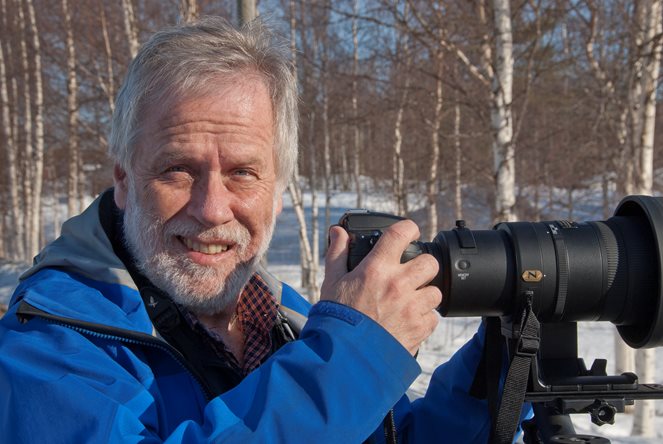The unique conditions in Norrbotten
The brackish water, climate, land uplift and rock composition of the Gulf of Bothnia,
creates conditions for a unique, varied plant life. Thomas Öberg writes, photographs and lectures on nature and often highlights connections both major and minor between the environment, the plants, the animals and us humans. He wants to show things that are not obvious, yet still are the key to the life we can see around us. Read on for a couple of Thomas’ tips on birds and plants to look for during your hikes.

Thomas Öberg – author, photographer and expert on the natural environment of Swedish Lapland.
The archipelago
The rare Red-throated Diver breeds on the small lakes of
the archipelago. They have food nearby – herring in the sea. The divers call eerily at
night. Sea-buckthorn grows along the weathered beaches, risen from the sea due
to land uplift. The berries are picked in late autumn, after freezing. They are packed
with vitamin C.
Hertsölandet
If you are lucky, you can hear the thin whistle of the Hazel Grouse. The speckled bird is skilled at hiding amongst old spruce trees. On the mires you will find rows of cranberries. The tasty berries can be picked one by one with cold fingers after the first frost. Cranberry jam is delicious.
Gammelstadsviken
The Great Crested Grebe builds a floating nest on the lake. They call loudly and show their proud collars. The grebes dive skillfully after little fish. On old overgrown farmland, the pink flowers of the Arctic Raspberry turn into red berries. The Arctic Raspberry is one of our most aromatic berries, full of rich, sweet flavours. However, cleaning them takes patience.
Reading tips!
”Den stora naturguiden” by Thomas Öberg.